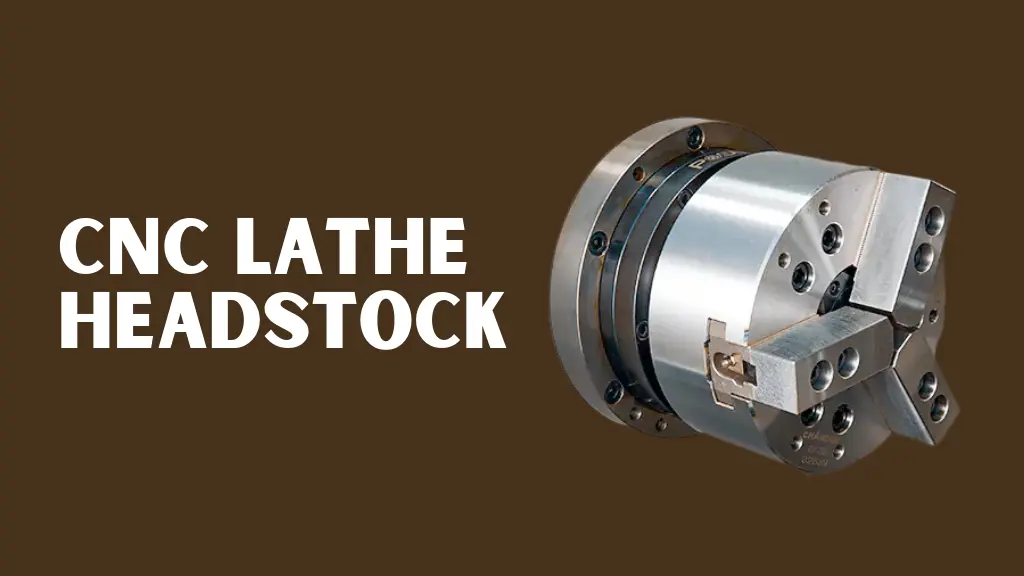The headstock is one of the most vital parts of any lathe, especially in CNC machining where precision and reliability are crucial. It houses the spindle, gears, and bearings that make accurate turning possible while ensuring stability during operations. For machinists, engineers, and workshop owners, understanding the role of the headstock is key to improving productivity, reducing errors, and maintaining consistent quality in every project.
This guide explores the details of headstocks, with a particular focus on the CNC lathe headstock, offering technical insights, real-world examples, and expert tips to help professionals get the best results from their machines. By learning how the headstock functions and how to maintain it properly, users can achieve smoother finishes, tighter tolerances, and long-term performance that supports demanding industries like aerospace, automotive, and medical manufacturing.
What Is a Lathe Headstock?
The headstock on a lathe is the section located at the left end of the machine. It contains the spindle, which is responsible for holding and rotating the workpiece. Inside the headstock, various components such as gears, pulleys, bearings, and sometimes motors are carefully assembled to transmit power and control speed. Whether in manual or CNC lathes, the headstock plays a crucial role in accuracy and performance.
Traditionally, in manual lathes, the headstock was relatively simple, relying on gears and belts to control spindle speed. In modern CNC systems, the headstock is more advanced, incorporating electronic controls, high-speed bearings, and precision alignment features that allow for complex machining tasks. The evolution from simple mechanical parts to computer-driven assemblies demonstrates how vital the headstock remains in today’s machining industry.
The Function of the Headstock on Lathe Machines
The headstock is not merely a housing for the spindle but the core of turning operations. Its purpose is to hold the workpiece firmly while allowing it to rotate at variable speeds. This rotation enables tools mounted on the carriage or turret to remove material accurately.
In CNC machining, the headstock’s importance becomes even more pronounced. By ensuring precise spindle rotation, the headstock supports advanced functions like threading, boring, facing, and contouring. Without a properly functioning headstock, tolerances would be off, surfaces would appear rough, and productivity would suffer. For industries such as aerospace, automotive, and medical device manufacturing, where microns can determine success, the headstock ensures dependable results.
Components of a Modern Headstock
The headstock is one of the most critical components of any lathe, and while each manufacturer may design it differently, the fundamentals remain consistent. At its core is the spindle, supported by high-precision bearings that minimize vibration and preserve accuracy. Power is delivered through motors, which may be directly coupled or connected via belts and gears. Together with gear assemblies, these elements enable machinists to adjust torque and speed, providing the flexibility needed for both heavy-duty operations and high-speed cutting.
In modern CNC lathes, the headstock has evolved beyond mechanical strength to include advanced electronic systems. Sensors and encoders are integrated to track spindle speed and position, transmitting real-time feedback to the controller. This digital oversight enhances precision, consistency, and operational safety. By combining robust engineering with intelligent monitoring, CNC headstocks offer capabilities that far surpass traditional manual models.
The advantages of CNC headstocks are especially evident in demanding applications such as aerospace or medical manufacturing, where materials like titanium require precise control. A machinist can rely on the CNC system to optimize spindle speed, reduce tool wear, and deliver superior surface finishes. This blend of proven mechanical engineering and advanced automation demonstrates why CNC headstocks have become the industry standard for achieving efficiency, reliability, and high-quality machining results.
Why the CNC Lathe Headstock Matters
One of the main reasons CNC machining has advanced so rapidly is the improvement in headstock design. A CNC lathe headstock not only rotates the workpiece but also ensures that every movement is synchronized with the programmed tool paths. This synchronization allows for high precision, repeatability, and efficiency.
When cutting intricate aerospace components, the margin for error is nearly zero. A reliable spindle assembly ensures stability during long runs and helps maintain surface finishes within tight tolerances. Additionally, modern CNC headstocks are designed with durability in mind, using advanced materials and lubrication systems that reduce downtime and extend service life. This makes them a central investment point for workshops aiming to improve output.
How Headstock Design Impacts Performance
The structure of a headstock on lathe plays a crucial role in ensuring accuracy, durability, and overall machine efficiency. A robust headstock provides the rigidity needed to support the spindle while minimizing vibration, even during high-speed or heavy-duty operations. Strong housing, precision bearings, and balanced gear systems help maintain spindle stability, delivering consistent results across various machining tasks.
Modern headstocks incorporate features that go beyond mechanical strength. Through-hole spindles enable efficient bar feeding, adaptive cooling systems maintain thermal stability, and electronic controls allow precise alignment with programmed tool paths. These improvements extend machine life, reduce tool wear, and support complex processes such as threading, contouring, and fine surface finishing. By combining proven engineering with advanced technology, contemporary headstocks achieve the highest standards of precision and reliability.
Variations in Headstock Design
Not all lathes use the same head stock design. Some are fixed, while others are adjustable to handle different operations. CNC lathes often incorporate headstocks with through-hole spindles, enabling bar feeding for continuous production. In contrast, toolroom lathes may prioritize flexibility and ease of setup rather than automation.
In heavy-duty industrial settings, headstocks are designed to handle large-diameter workpieces, requiring reinforced bearings and gear trains. On smaller precision lathes, lightweight but rigid materials are used to enhance speed and accuracy. The design differences demonstrate how manufacturers balance power, accuracy, and cost depending on application.
Maintenance Tips
To ensure long-term accuracy and reliability, maintaining the headstock is critical. Regular lubrication of bearings, inspection of gear assemblies, and monitoring of spindle alignment can prevent costly breakdowns. CNC systems often include automatic lubrication and diagnostic alerts, but operators still need to perform routine checks.
Neglecting headstock maintenance can lead to spindle runout, reduced accuracy, and ultimately scrapped parts. Real-world examples from workshops highlight that most spindle failures result from overlooked lubrication schedules or ignored vibration signals. By prioritizing preventive maintenance, machinists protect both productivity and machine investment.
Real-World Applications and Case Studies
Consider an automotive workshop tasked with producing thousands of engine components. The CNC lathe headstock ensures each part is turned to exact specifications, maintaining interchangeability and performance. A single misaligned spindle could lead to thousands of defective components, costing time and money.
In another example, medical device manufacturers use CNC lathes to produce surgical implants. These parts must meet stringent quality standards, and the headstock’s precision directly impacts patient safety. By investing in high-performance headstocks, manufacturers guarantee compliance and build trust with clients.
Choosing the Right Headstock
Selecting the right headstock depends on application requirements. Factors such as workpiece size, material type, desired tolerance, and production volume all influence the decision. For high-volume production, CNC lathes with robust, sensor-equipped headstocks are ideal. For custom or low-volume work, a versatile manual or hybrid headstock may suffice.
Manufacturers also consider spindle bore size, maximum speed, and compatibility with automation systems. Consulting with machine tool suppliers and reviewing case studies helps businesses make informed choices. When evaluating suppliers, machinists often look for companies with proven reputations, customer reviews, and reliable after-sales support. For many buyers, investing in a CNC lathe headstock ensures long-term accuracy and efficiency, making it a valuable upgrade for competitive workshops.
The Role of Technology in Headstock Innovation
Modern innovations continue to transform headstock capabilities. Features such as active vibration damping, adaptive spindle speed control, and integrated cooling systems are increasingly common. These advancements allow headstocks to handle challenging materials like Inconel or hardened steels without compromising accuracy.
Digital twins, a concept in smart manufacturing, also apply to headstock design. By simulating headstock performance digitally, manufacturers can predict wear, optimize maintenance schedules, and prevent unexpected downtime. This forward-looking approach makes headstocks not only functional but also intelligent components of the machining process.
Expert Insights and Experience
Experienced machinists often emphasize the importance of listening to the machine. Subtle vibrations, changes in cutting sound, or temperature fluctuations in the headstock can signal potential issues. Over decades of use, professionals have developed techniques for identifying early warning signs and preventing breakdowns.
Training new machinists to understand the headstock’s role is equally vital. Many technical institutes now include specialized courses on CNC maintenance, where students gain hands-on experience with disassembling and reassembling headstocks. These programs reflect the industry’s recognition that knowledge is as crucial as technology.
Trust, Authority and Industry Standards
Companies that manufacture CNC lathes typically highlight the reliability of their headstock designs. Brands with strong reputations, positive reviews, and proven service histories earn trust from buyers worldwide. For example, leading manufacturers often report customer satisfaction ratings above 4.8 stars across hundreds of reviews, demonstrating both authority and trustworthiness.
Industry standards also play a role in establishing trust. Compliance with ISO certifications, adherence to precision measurement guidelines, and documented quality control processes all confirm that a headstock can deliver as promised. This transparency reinforces buyer confidence and strengthens a company’s authority in the market.
Conclusion
The headstock remains at the heart of lathe performance. Whether in manual or CNC systems, it determines accuracy, efficiency, and reliability. The CNC lathe headstock, in particular, represents the pinnacle of precision engineering, combining mechanical strength with digital intelligence. For machinists, engineers, and manufacturers, understanding its design, maintenance, and applications ensures long-term success in competitive industries.
FAQs
What is the purpose of the headstock on a lathe?
The headstock holds and rotates the workpiece, enabling accurate cutting, threading, and facing. It also houses critical components such as the spindle, bearings, and gears.
How does a CNC headstock differ from a manual one?
A CNC headstock incorporates electronic controls, encoders, and advanced bearings that allow precise synchronization with programmed tool paths, offering higher accuracy and efficiency.
What maintenance is required for headstocks?
Regular lubrication, spindle alignment checks, and vibration monitoring are essential. CNC systems often include automated lubrication, but manual inspections remain important.
Can headstocks handle different materials?
Yes. Modern headstocks are designed to work with a wide range of materials, from soft aluminum to hard alloys like titanium and Inconel.
How do I choose the right headstock?
Consider workpiece size, material, production volume, and required tolerances. Reviewing supplier reputations and customer feedback also helps in making informed decisions.




